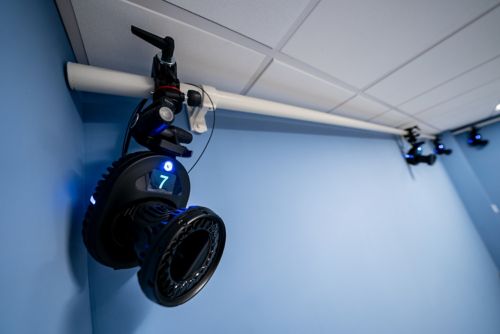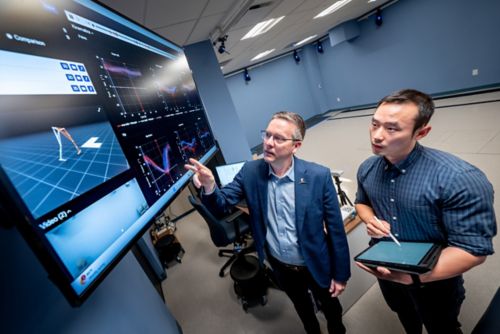A gait assessment can take up to 3 hours. The staff encourages caregivers to stay with their child.
The assessment starts with a clinical exam. This includes things like measuring the length of your bones and how far your limbs can move (called range of motion).
The next part of the assessment includes placing reflective markers on different joints of your child’s body. The staff will ask your child to walk across the room several times.
As your child walks, 18 infrared cameras track how the markers on your child’s body move. These cameras capture movement from all directions. They use the same technology that helps create computer-generated imagery (CGI) characters in movies and animations for video games.
Your child may get tired. The team works closely with families to make sure patients feel comfortable and supported. Many children enjoy wearing the movement sensors. Some say it feels like being a robot.
Researchers may also use other sensors to measure muscle activity. They can identify conditions like spasticity.
For children who are too young or too medically fragile for a full analysis, the “magic carpet” is an option. It has more than 25,000 sensors that record movement patterns, even when children stumble or play.
Sometimes, your child may take home a wearable device, such as a watch or a shoe insert, to wear for a certain period of time. This helps us see how your child moves in their everyday environment.
The staff compares the data they collect with normal movement patterns.



